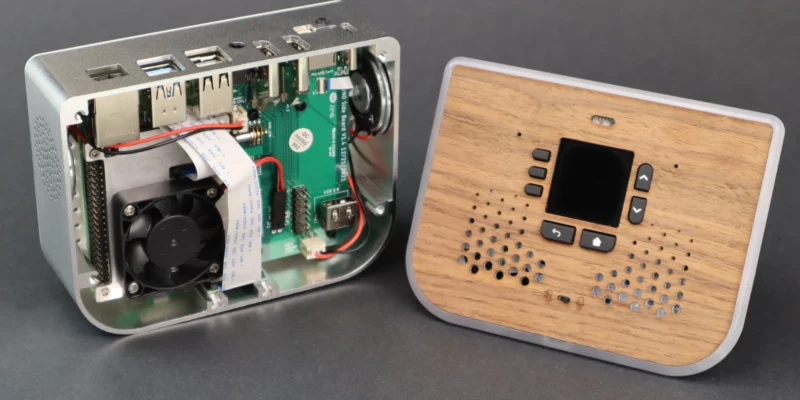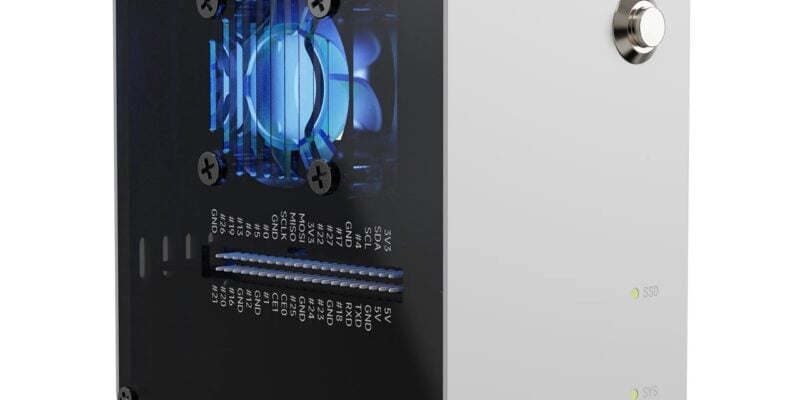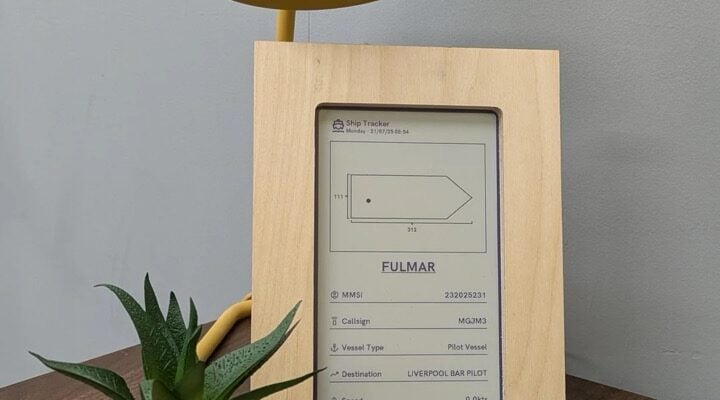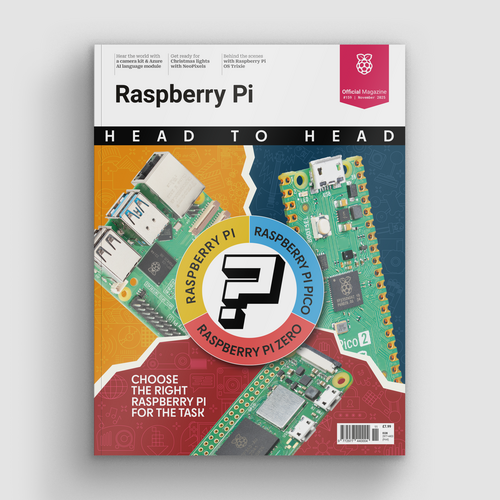Bit Time Rotary Dial Phone project showcase
By Nicola King. Posted

A unique project in Essex explores how all ages engage with the tools that enable us to communicate, including using two upcycled retro phones. Nicola King dials in
Advertisement
Head to head: Raspberry Pi + Raspberry Pi Zero + Raspberry Pi Pico.
The Rotary Dial Phone project is part of a wider initiative called Bit Time – a project that has been running in Basildon, Essex over recent months. It's the brainchild of Dave Norton and Laura Travail. Dave is a digital Artist and drama practitioner whose work ranges from large-scale interactive installations to live theatre performed in a virtual world. Laura is an artist and context strategist with an outdoor theatre and live-art background.
Lead artist Laura explains, “Bit Time is an intergenerational project, combining the skills and knowledge of the very young with those of our elders.

"As artists and facilitators, we’ve been bringing together these ideas and possibilities into playable works that in themselves keep that momentum going. These are projects about communication technology, but they are also communication technologies in themselves. By interacting with the art, you are interacting with each other.”
Cold calling
So, the retro phones… where do they fit into this story? Phone project artist Dave Norton says, “The inspiration for the question/answer phones came from a desire to build a device that lets you share a message with someone you’ll never meet. A digital time capsule of anonymous thoughts, advice, stories, and memories that could be listened to by anyone. You have no idea who might hear your message and how it could affect them.”
He explains how the system works: “You walk past a phone and it starts ringing, you pick it up and the operator asks you to answer a question, e.g. ‘what was your first phone?’, ‘what will a phone of the future look like?’ A ‘recording’ light comes on and you leave your message and hang up. Later on, you see another phone that also rings as you walk past; you pick it up and it plays back a random message left by someone else.”

A motion detector identifies when someone walks past, while a push-button detects when the receiver is lifted. The phone’s mic and speaker are hooked up to a Raspberry Pi, which chooses a random audio file question to play. “The mic starts recording the user’s message for 15 seconds, or until they hang up, then the whole process restarts. The answer phone works in a similar way, but only chooses random audio files to play back.”

Since the installation needed to work in any kind of location, it couldn’t rely on WiFi to transfer audio files between the phones, particularly as the audio files needed to be checked manually before they could be shared with the public. “I ended up having to code a ‘syncing’ mode, which is activated when a USB drive is inserted into Raspberry Pi, which automatically transfers all the audio files to the drive,” reveals Dave.

You talkin’ to me?
The Bit Time project, including the rotary dial phones, ultimately became an exhibition which toured Basildon in summer 2019. Dave says, “There’s something really unburdening about being anonymous, and something really pleasing about being given an open platform to speak your mind. I loved the idea that the installation starts as a blank slate and, as it travels to different events and locations, it collects a mixture of stories and thoughts and shares them with anyone who cares to listen, something akin to a travelling storyteller.”
He says the phones elicited a variety of reactions. “Some people just hang up straight away, some people audibly freak out that they’re actually being recorded, some yell bizarre phrases, but most people genuinely answer the question. No two answers have been similar and it makes for some really interesting listening… We’ve ended up with hundreds of varied audio responses – it would be lovely to build some sort of audio installation using all the clips.”

Quick facts
-
The phones project took around three weeks to complete
-
Basildon Library Creator Space provided a location to construct the Bit Time artwork
-
A 5 V solenoid is used to ring each phone’s bell
-
Dave programmed each Raspberry Pi using Python
-
He suggests the phones could be used in the foyer of a venue after an event, to glean honest views from attendees
Subscribe to Raspberry Pi Official Magazine
Save up to 37% off the cover price and get a FREE Raspberry Pi Pico 2 W with a subscription to Raspberry Pi Official Magazine.
More articles

All right all right!! Artificial Intelligence, Hollywood style
When we get AI right, odds on it’ll be thanks to small firms, motivated individuals, and Raspberry Pi
Read more →

Pironman 5 Mini review
Compact and bijou, this Raspberry Pi 5 case looks cool
Read more →

E-ink shipping monitor
The display comprises a Raspberry Pi Zero 2 W, a Pimoroni Inky Impression 7.3-inch display, and a Wegmatt dAISy Mini AIS receiver. AIS stands for ‘Automatic Identification System’, and it’s this device that picks up the signals coming from the ships themselves, which goes to the display via the Raspberry Pi Zero 2 W. There’s probably a […]
Read more →
Sign up to the newsletter
Get every issue delivered directly to your inbox and keep up to date with the latest news, offers, events, and more.
